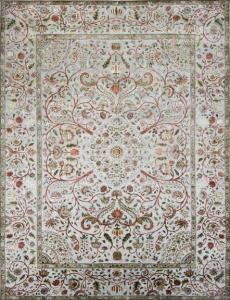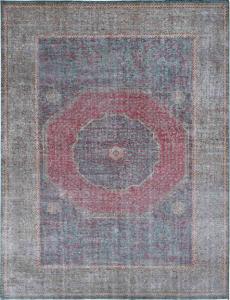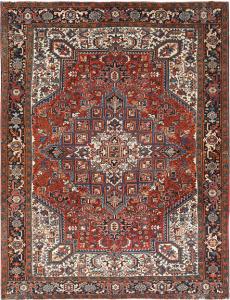
Customers have favoured Hand-knotted rugs as a way to express their aesthetic sensibilities and appreciation for fine art.
CARLSTADT, NEW JERSEY, UNITED STATES, August 18, 2023/EINPresswire.com/ — The carpet’s feel is determined by the weaving method. Handmade rugs are rather costly because of the skill, time, and effort invested in their creation.
All across the world, hand-knotted carpets are considered some of the most valuable and expensive rugs available. Customers have favoured them as a way to express their refined aesthetic sensibilities and appreciation for fine art. They work with skilled artisans who put in long hours daily to create heirloom-quality wares. Hand-knotted rugs are known for their intricate patterns and attention to detail. Due to the high level of skill required, manufacturers only utilise the finest wool, preferably from young lambs, for the weaving process.
Rugs from 1800GetARug are classic and will only improve with time. They improve the aesthetics of their surroundings and gain value with time. They require less time and effort to clean and care for than their synthetic counterparts. The strength and resilience are unrivalled.
Qualities that distinguish Hand-Knotted Carpets
Millions of knots are individually tied onto a basis to create these rugs by 1800GetARug. After the rug has been knotted, the pile is shaved to the proper height. There is a front and back to each of these carpets. The plush appearance and soft touch are just on the front side; the back is a knotted surface. The finest hand-knotted rugs come from the countries of Iran, Pakistan, China, India, Afghanistan, Turkey, Romania, and Russia.
The foundation of each high-quality rug is the quality of the wool utilised. The design, the number of knots, and the weavers’ skill all contribute to the finished product being something to be treasured. The many styles of hand-knotted rugs feature a wide range of wool densities and yarn ply counts.
There are primarily two types of hand-knotted rugs:
Flat–woven Rugs
There are no knots or a base in this type of weaving. 1800GetARug’s flat-woven rugs feature patterns woven from both horizontal and vertical threads. The weft threads run parallel to the warp strands and are interwoven with them. These carpets are reversible thanks to a straightforward cross-weaving pattern. The durability of these rugs is enhanced by the fact that both sides can be used. Here are a few examples of flat-woven rugs:
• Casual and flat-woven, the Dhurry is often woven from cotton. Because they are reversible, they have always been in demand and last a very long time.
• Soumak is the soft, velvety variety. Weaving with double or even four warps creates thick weaves, passed under the multiple warps once again.
• A kilim’s smooth, fluffy surface results from an ancient weaving process that produces a herringbone pattern on the top of the rug. The rug’s primary colour is woven into the weft strands, which also serve as the basis for the pattern. The weft strands create the pattern, and the colour changes by looping through the warp strands.
The Piled Rugs
1800GetARug’s pile rugs are constructed with a mesh-like base onto which the pattern is knotted wool yarn. The soft texture of these carpets comes from the dense pile of yarn tied together. Below are some examples of the various weaves used in piled rugs:
• The most widely accessible style of pile rug is the Persian weave rug. The thickness of these rugs plays a crucial role in determining their pricing. Persian piled carpets are known for their elaborate designs, which often feature alternating colours knotted together in a specific manner. Each pattern is named after a well-known location in Iran, its country of origin.
• Sculptured weave rugs are the thickest pile because of their dense knotted weave and basic motifs.
• Nepal weave is a relatively contemporary style of weaving in piled carpets, with patterns generated at the intersection of clashing colours. Subtle patterns that are either abstract or derived from nature are used.
Knots Used in Hand-knotted Carpets
The artisans who make hand-knotted rugs often use one of two standard knots. Handmade rugs of high quality typically feature either the Senneh or Ghiordes knot. The Jufti knot, the third kind, is also in use but is less popular. This method is not employed to make rugs of the highest grade because it is regarded as subpar.
Senneh Knot
Senneh knots, often called Persian knots, are commonly used in many parts of the world, including Iran, Pakistan, Afghanistan, India, and Central Asia.
They are sometimes referred to as “double knots.” A double knot is another name for this knot. The construction of Persian knots could be more symmetrical. Rugs with intricate designs often employ these asymmetrical knots.
Ghiordes Knot
This is a symmetrical example of a single knot. The Turkish weavers of Anatolia and Caucasia strongly prefer this particular knot. The Iranian Kurds share its popularity. Symmetrical knots are used to construct strong, well-organised piles.
Jufti Knot
This knot is less common than others. The Iranian province of Khorasan is the primary user. Most carpets now use this knot, which is inexpensive and widely used. The time required to tie one of these knots is minimal compared to other knot types. The result is different from the intricate weaving that defines high-quality handmade carpets. Because of their lack of strength and durability, rugs woven with Jufti knots are not considered among the industry’s best.
Baluchi, Chobi, Beljik, Heriz, Gabbeh, Khan-Mamdiu, Kazak, Shairwan, Qashqai, and Qoma are only a few of the most popular varieties of hand-knotted rugs.
Knots are typically found in Persian, Bokhara, and Tribal rugs. Each sort of rug is distinguished by its origin, the materials it is woven from, the number of knots per square inch, and the complexity of its design.
Reasons to Choose a Handmade Rug
• Rugs created by hand are of higher quality and last longer
• Rugs created by hand use fewer resources
• The Uniqueness of a Handmade Rug
Ori Wilbush
1800GetARug
+1 201-933-4300
email us here
Visit us on social media:
Facebook
Instagram
![]()
Originally published at https://www.einpresswire.com/article/650612496/trends-innovations-in-the-hand-knotted-woven-rugs-of-modern-era





